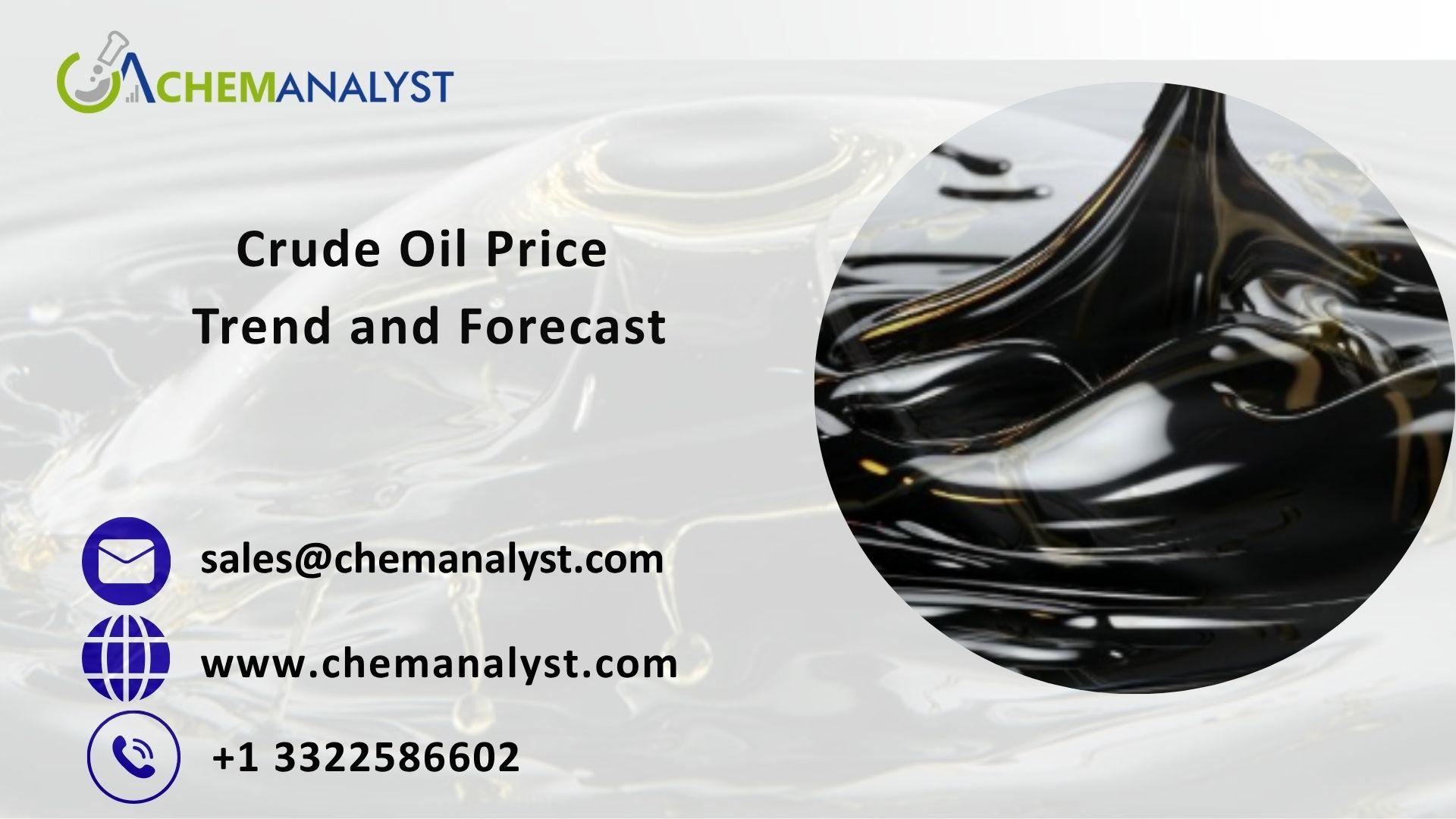ChemAnalyst
GmbH - S-01, 2.floor, Subbelrather Straße,
15a Cologne, 50823, Germany
Call: +49-221-6505-8833
Email: sales@chemanalyst.com
Website: https://www.chemanalyst.com/

North America Crude Oil Market Analysis Q2 2025
The global crude oil market in the second quarter of 2025 displayed considerable volatility, driven by a combination of geopolitical tensions, demand-supply imbalances, and macroeconomic pressures. North America, Asia-Pacific (APAC), and Europe all experienced significant fluctuations in crude oil prices, though each region responded differently to underlying market dynamics. This analysis focuses on North America while providing context from APAC and European markets.
North America: Market Overview
In Q2 2025, North American crude oil prices declined significantly, reflecting a complex interplay of global and domestic factors. West Texas Intermediate (WTI) averaged approximately USD 65.11 per barrel by the end of June, marking a 9% drop quarter-on-quarter. This represented the lowest price point for WTI in six months, highlighting the bearish pressures that characterized much of the second quarter.
Despite the decline, crude oil prices showed signs of stabilization in early July, hovering around USD 68 per barrel. This stabilization followed a period of sharp fluctuations in April and May, when WTI experienced notable downward pressure.
Get Real time Prices for Crude Oil: https://www.chemanalyst.com/Pricing-data/crude-oil-1093
Factors Contributing to Price Declines
Several factors contributed to the quarter-on-quarter drop in North American crude oil prices:
Price Rebound in June
Although April and May saw a pronounced downturn, June marked a temporary recovery in prices. This rebound was primarily driven by escalating geopolitical tensions in the Middle East:
Asia-Pacific (APAC): Market Trends
Crude oil prices in the Asia-Pacific region mirrored some of the North American trends, though regional factors created distinct outcomes:
Regional Factors Impacting Prices
Several regional factors influenced APAC crude oil dynamics:
Europe: Price Movements and Recovery
Europe experienced the most pronounced quarterly decline among the major regions. Brent crude averaged around USD 72.73 per barrel by the end of March but fell by approximately 11.8% quarter-on-quarter. The downturn reflected weak demand, higher regional inventories, and the transmission of oversupply from global markets.
Factors Driving European Price Fluctuations
🌐 🔗 Track real time Crude Oil prices and market trends on ChemAnalyst: https://www.chemanalyst.com/ChemAnalyst/PricingForm?Product=Crude%20Oil
Monthly Analysis
Comparative Regional Analysis
A comparison of North America, APAC, and Europe highlights distinct patterns while reflecting overarching global trends:
|
Region |
Q2 Price Trend |
Quarter-on-Quarter Change |
June Price Levels |
Key Drivers |
|
North America |
Decline, rebound mid-June |
-9% |
USD 65.11–68 WTI |
Oversupply, soft domestic demand, Iran–Israel tensions |
|
APAC |
Decline, June rebound |
-10.2% |
USD 68.04 WTI |
Soft demand, inventory adjustments, global supply risk |
|
Europe |
Steep decline, modest recovery |
-11.8% |
USD 76–77 Brent |
Weak demand, supply surplus, geopolitical tensions |
From the table, Europe experienced the largest percentage drop, emphasizing the sensitivity of Brent to demand fluctuations and external shocks. North America’s WTI, while declining, showed a faster stabilization pattern, reflecting the region’s flexible shale production and domestic demand influences. APAC prices, influenced by both global trends and regional demand recovery, rebounded slightly later in the quarter.
Market Drivers and Key Influences
The crude oil market in Q2 2025 was shaped by several interconnected factors:
The recurring theme across all regions was the Iran–Israel conflict. Concerns about potential disruptions in the Strait of Hormuz created uncertainty in global oil supply chains, which temporarily supported prices, particularly in June. Market participants closely monitored developments in the region, and any news of escalation immediately influenced futures and spot markets.
Global supply continued to outpace demand in Q2 2025. U.S. shale output remained robust, partially offsetting OPEC+ production cuts. Additionally, inventories in strategic reserves and commercial storage were high, placing downward pressure on crude oil prices in April and May.
Economic activity in key regions directly influenced oil demand:
Crude oil is heavily influenced by financial market dynamics. Investor sentiment, interest rate expectations, and currency fluctuations all played a role in shaping the market. Hedge funds and speculative positions amplified price swings, particularly in North America and Europe.
Implications for the Energy Sector
The Q2 2025 trends carry several implications for stakeholders in the energy sector:
Future Outlook
While Q2 2025 witnessed a mix of price declines and temporary rebounds, several factors are expected to shape the remainder of 2025:
Conclusion
The Q2 2025 crude oil market displayed notable volatility across North America, APAC, and Europe. North America experienced a 9% decline quarter-on-quarter, with WTI averaging USD 65.11 per barrel by June 30, before stabilizing near USD 68 per barrel in early July. APAC saw a 10.2% decline, with WTI rebounding to USD 68.04 per barrel in late June. Europe experienced the steepest decline at 11.8%, with Brent recovering to USD 76–77 per barrel in late June.
Geopolitical tensions, supply-demand imbalances, and financial market sentiment played critical roles in shaping the crude oil landscape. While prices rebounded in June across all regions, underlying vulnerabilities remain, emphasizing the need for stakeholders to monitor market developments closely. The remainder of 2025 is likely to continue reflecting the interplay of these factors, with potential for both volatility and strategic opportunities in the global oil market.
Contact Us:
ChemAnalyst
GmbH - S-01, 2.floor, Subbelrather Straße,
15a Cologne, 50823, Germany
Call: +49-221-6505-8833
Email: sales@chemanalyst.com
Website: https://www.chemanalyst.com/

